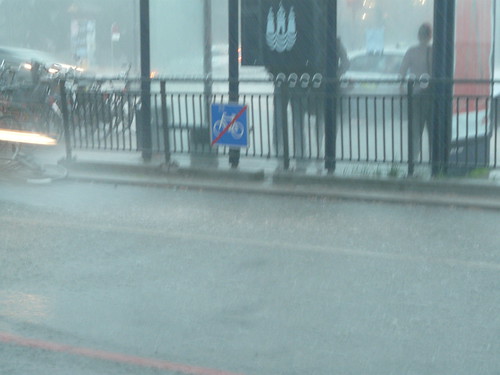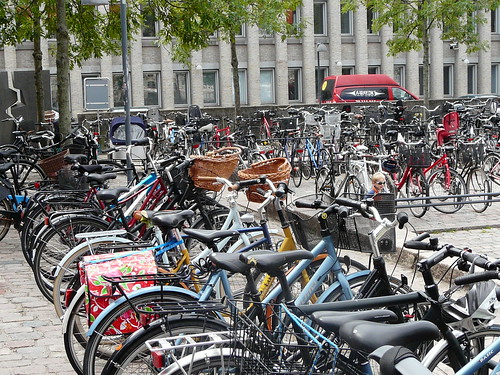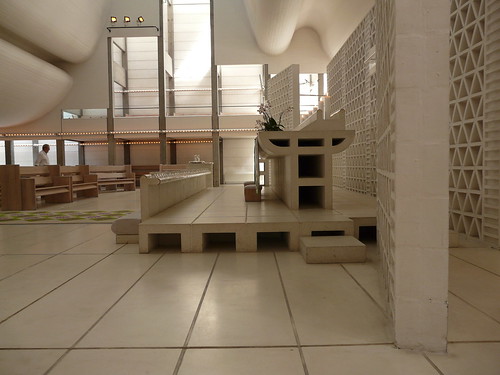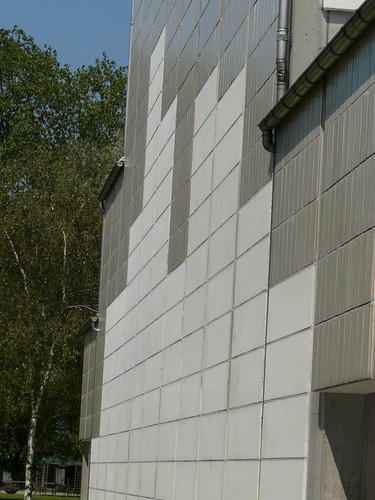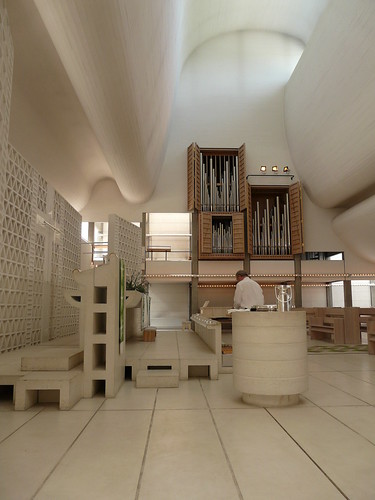24 December 2011
21 December 2011
If I Wished Hard Enough...?
http://estudio27architects.blogspot.com/2010/12/christmas-wish-list.html
19 December 2011
A (Very) Occasional Series
 |
| Photo Courtesy of BenettonTalk |
Nevertheless, I also thought that the more obscure benefits of cycling to work could probably do with an airing, just in case it gets forgotten that it is the simple things in life that matter. After all, who really cares about how many kilogrammes of CO2 they omit into the atmosphere at any given moment? Or how their long term lifestyle choices will shave 20 minutes off their life expectancy?
No, what we want is the here and now. And I noticed right here and right now that cycling to work has made a dramatic difference in the number of shoes I wear out per-annum, since I stopped walking to work.
I expect a drastic shift from pedestrian activity to the cycling world as soon as news of this dramatic finding gets out. In austerity Britain, watching the pennies is where it's at.
28 November 2011
The Green Grid
14 November 2011
There is no School Like the Old School
We made a trip to St Fagan's recently - the Museum of Welsh Life in Cardiff which is one of the most popular open-air museums in Europe.
This building is an old barn where the columns are made of solid massive slabs of slate, and the rear building is made of small pieces of slate laid horizontally like a dry stone wall.
For some reason, this is utterly appealing to architects. Perhaps it is the reassuring idea that the concept of modernism is completely encapsulated by a medieval barn, and is therefore less scary than the rantings of that madman Le Corbusier. In a survey*, the vast majority of architects asked about their favourite building at St Fagan's chose this one. I'm sure there is an essay there somewhere.
*we asked at least 3.
For those bike fans out there, do not fret. Here is a classic cargo bike I found hiding under a pile of tin baths and buckets in the shop that is part of the village grouping at the museum. It should be centre stage, and probably is an a parallel universe where people are sensible and value bikes not buckets. Again, an essay beckons...
31 October 2011
Car Day
This post is in homage to Dave Warnock who has just achieved the milestone of cycling everyday for one year, and whose regular comparisons of his travel experiences cycling and driving are always a good read.
I had a meeting in Swansea last week, for which I had to take the car (issues of meeting clashes and giving lifts to colleagues). On my return, I was able to park in the office car park in the centre of town. I then had to pick up No.1 son from his nursery – barely half a mile away and approximately 7 minutes by bike, whatever the traffic – at the end of the day. I was careful and left a bit of extra time – leaving about 25 minutes for a journey you can walk in about 10. However, I was totally flummoxed by the sheer volume of traffic and so at 10 minutes to six (six is the dreaded cut-off time – otherwise you get fined), I had to ring my partner and beg her to jump on her bike and dash to the nursery as I didn’t think I was going to make it. In the end, she beat me by about 1 minute and I arrived at about 30 seconds to six. She travelled easily twice the distance I had to. I normally arrive to collect my son cheerful, and full of fresh air. This time I arrived completely stressed, panicking and frustrated.
I had time (unfortunately) whilst sitting in a solid jam of cars to reflect on the advertising method of promoting cars as tools of freedom, choice and practicality. Those advertising gurus must be geniuses to have conned so many into believing it. Can you imagine my frustration at being 500yds away from my boy, but with no way to get there and no alternative but to sit it out? If I have to take my car again, I’ll chuck the Brompton in the boot and use that at the end of the day – the car can stay in the car park.
I’m beginning to resent the gas-guzzling, money draining, time wasting appendage outside. But will we have the guts to get rid of it? To be honest, I doubt it. Until transport thinking catches up with the unarticulated desires of (I believe) many people, and starts considering genuine alternatives, once again that is a choice our addiction to the motor car has denied me rather than enabled - the choice to do without.
22 October 2011
Gerhard Richter, Panorama
20 October 2011
Conference Lecture
19 October 2011
Ignoring the HGV in our Collective China Shop
 |
| Label to be added to the backs of HGVs |
17 October 2011
Inflation in the Oddest Places
This is concrete (chocolate) proof that inflation has gone through the roof. This is chocolate money, which I'm pretty sure only came in coin form when I were a lad. Imagine my apoplectic rage on discovering that chocolate money now includes notes as well as coins! Up to £50 ones for goodness sake!
No doubt next time I buy some, I'll end up carrying it home in a wheelbarrow. Whatever next.
14 October 2011
Harris Hack
Gentlemen, wax those moustaches...
4 October 2011
Private Use of Public Space
 |
| I think this is Edmonton Green Shopping Centre |
 |
| Part of Cabot Circus, Bristol |
22 September 2011
The Inevitability of Cycling and Taxes

22 August 2011
It's an It Chair, isn't it?
Well, those diligent chaps at Velorution kept their eyes peeled and obviously managed to get their hands on some stock. They put the word out and I jumped at the chance. I know the boy is a bit too big now. I know it was mega-bucks...
But come on, how cool is that?
It is made of steel tubing, with a clamp that joins to the Brompton seat post, with a matching Brompton-style clamp. The other end sits snugly over the top tube, but also has a shaped steel section that hooks under the Brompton's own top tube clamp and keeps the device steady and positively located. You need to provide your own saddle (a bit ridiculous, bearing in mind the ridiculous price) that sits on a cantilever tube projecting from the shaped main section. The child places their feet on the flip-down foot rests, and then holds onto the bike handlebar. A necessary "benign dictator" role needs to be taken by the adult pilot, as the junior co-pilot can sometimes try to choose the direction you are travelling in. This can throw your balance a bit. Pedalling is straightforward, even if a bit "bow-legged" to avoid your knees banging into the passenger in front. A small saddle is helpful, as this makes pedalling perfectly normal once the passenger has disembarked. Folding is ok, even though I still haven't got the technique sorted. I sometimes end up looking like someone struggling with a deckchair, in stark contrast to the 10sec slick folding method I had down to a tee before. The folded package is slightly larger and quite a bit heavier, but acceptable if not carrying a great distance. The bike flexes much more when riding, due to the extra weight. Neither the boy or I are particularly bulky though, so it feels fine. Some may prefer the harder suspension block, which might eliminate some of the flex.
You can have a great conversation whilst riding and the child gets a brilliant view of proceedings. The boy now sings all the way to nursery, so it seems to work for him. He loves it, even if he's not allowed to steer. Yet.
11 August 2011
Flood
We were there. During our recent rip to Copenhagen, we were caught in the most amazing deluge I have ever seen. After an amazing trip to the art gallery at Louisiana, where the weather was like this:
We returned to Copenhagen in late afternoon. Arriving at Norreport Station, we stepped off the train and into a storm of biblical proportions. Hiding in the station, we watched as traffic ground to a halt and the skies darkened as though night had come. It rained so hard, for almost two hours, that the station roof started leaking and it rained inside too. I read on Copenhagenize that there were 5,000 lightning strikes those two hours. It felt as though the paparazzi were lurking outside, flashbulbs popping.
Of course, the rain did eventually stop. We were able to return our hire bikes in time (through deserted streets) but the ensuing traffic chaos resulting from the flooding caused us no end of problems - trains were delayed, buses diverted and traffic jams appeared everywhere. How we wished we'd hung on to the hire bikes, as the Copenhagen citizen cyclists kept on rolling.
9 August 2011
the Incredible Shrinking City
The steady pace of cycling in Copenhagen's cyle lanes, combined with the subjective safety they create in ones mind has the excellent effect of shrinking the city to a different scale. We happen to be well versed in the art of walking around cities and understand the scale and possibilities of distance and time as pedestrians. But this bike contraption thingy shrinks distance and opens up opportunities in an incredible way, when combined with the simple device of a safe, dedicated cycling infrastructure. Freedom from the mysteries of public transport, freedom from the motor car and the niceties of parking, directions, maps and getting lost. This exhilarating sense of freedom in all senses must have been what drove millions of people to take to the bicycle a century ago.
In urban planning, we often see masterplans prepared which attempt to consider the idea of "walkability" - whereby facilities and functions, or connections to other transport opportunities, are designed to be within certain walking times or distances. This is clearly a sensible and laudable way to proceed. But, I wonder what impact there might be on the flexibility and practicality of masterplans were an additional layer of "cyclability" to be added.
If the infrastructure was to be put in to a new development from the beginning, to allow this secondary layer of cyclability to operate beyond the normal walking radii, many possibilites might open up. Putting the car just a stage lower down the mental priority list might also help cut the short, local trips that get in the way of the journeys that the car is clearly very good at - long, fast trips from point to point over a regional scale. Not the quick trip to the shops or picking the kids up from school. And I hold no truck with the idea that just because it hasn't been done before, or done elsewhere that this would be a waste of time. Presumably, the City of Copenhagen started with just one cycle lane somewhere. Look what they managed in the meantime.
With the simple addition of "Cyclability" into the design mix, the Incredible Shrinking City would have neighbourhoods that were more civilised, more attractive and just that little bit more gentle of pace.
29 July 2011
Flashride at Blackfriars Bridge
Blogger Cyclist in the City has documented every stage of the debate and describes the proposed design as "a motorway in the centre of town" Here he explains why he will be joining the flashride tonight.
"We've been terribly polite. We've talked to the politicians. We've won over every one of the political parties. It's taken months and months. And nothing is going to change ... I'm not prone to protest. But I've had enough of TfL and its behaviour. I've tried the political approach. And I think TfL has just stuck two fingers up at the politicians as well as me. Blackfriars isn't just about the bridge. It's about how I feel TfL ignores cycling all across London."I don't want acres of valuable city real estate unthinkingly devoted to an outmoded, inefficient, overly subsidised mode of transport, to the detriment of all of us, so good luck tonight and Monday. This is what it took in Copenhagen to turn the tide against the orthodoxy that car is best (apologies to Copenhagenize):

15 July 2011
God is in the Details
As I have noted before, we visited Copenahgen recently and whilst we there, we hired bikes for a few days - to see what all the fuss is about. We both got "omafiets" style bikes; Raleigh "Hire Bikes" as they were labelled. Unremarkable but sturdy and straightforward machines. One had a Bobike style seat on the pannier rack for carrying No.1 son. They had three hub gears, front pull brake and rear coaster brake - something that I had not used before and which needed some getting used to. The most tricky thing for me was not being able wind the pedals back whilst waiting at a junction to get into the best "launch" position, as I am used to. I did get the hang of preparing the pedals as I came to a stop but a bit more practice is needed.A detail I noticed, which would seem trivial to a Copenhager, was that the reason all the girls look so elegant on their bikes is the excellent riding position they adopt, no doubt as their mothers taught them. Key to this, it seems, is having the seat set high enough so that you get a full leg stretch on the downstroke. For most, this means you can't sit on the seat and touch the ground with your foot, but the low frames make a quick forward dismount easy. Often, I see UK cyclists who have the seat far too low and probably also lack the confidence to ride with this set up - which I presume is more efficient.
We got the hang of the cycle lanes quite quickly. There is a definite slow zone to the right and fast zone to the left (closer to the road), although it seems there are complaints in Copenhagen about the widths of the cycle lanes and the unpleasant sensation of faster bikes whizzing past you with only inches to spare. This is a nice illustration of the difference in emphasis between a mature cycling culture such as that found in Denmark and good ol' Blighty, where the thing whizzing past just inches away isn't a bike, it's a bin lorry or white van going at 45mph.
The cycle lanes are segregated from the pedestrian pavement by a standard upstand kerb and from the road carriageway by a low profile kerb. I was struck by how narrow the residual pedestrian pavement was, with congestion often a problem where shops had displays outside, or lots of bikes were parked.
It took a while to get to grips with the Copenhagen left hand turn (is this called a "box" turn?). To turn left, you raise your hand and pull in to join the queue of bikes waiting to cross the junction in the perpendicular direction, rather than moving across the traffic into the centre of the road and then crossing the oncoming traffic, in the vehicular style. It is a bit slower, having to effectively wait for two sets of traffic lights to turn, but then the pace seems to be that much slower and steadier anyway that it doesn't really matter - not mixing with the traffic means the bike beneath you goes at its own pace. You don't need to attempt to match car-speed to stay safe and consequently you seem to eat up the miles with very little effort.
The system of dedicated bike signals and separated lanes at key junctions is effective, if a little daunting for the newcomer - although it is not designed to make the tourists feel at home, but to be practical and convenient for the (vast) A-to-B brigade. Parking is simplicity itself. Just stop more or less anywhere and there will be some bikes parked. Pull up, drop the kickstand, secure the fitted rear wheel lock and walk away. No hunting for a stand or lampost thin enough to get the D-Lock around. In fact, the hardest part is finding it again in the inevitable sea of identical looking bikes that will have accumulated whilst you were away.
Not all roads have cycle lanes - only the ones where the mismatch between speed of car and speed of bike is at its most. Thus, most residential road are low speed and cycling is on-road. Through Copenhagen centre, the main avenues have the most densely used cycle lanes. This is an interesting contrast to current tactics in the UK, where cyclists are often urged to find circuitous, but quiet, back roads. In Copenhagen, the main roads are the most direct and thus the most used by cyclists wanting a fast route from A to B. So the big H.C. Andersens Boulevard (8 lanes of traffic in places) is also a significant cycling artery, which is completely logical and legible.The experience of cycling in Copenhagen was enjoyable, convenient, safe and instructive. And all the more frustrating for having that kind of cycling culture over there but not over here. Why ever not? I guess it is all in the details.
14 July 2011
A Religious Experience
We are not really religious souls, but Jorn Utzon is a saint of sorts for architects. He is of course mostly and rightly known for his work on the Sydney Opera House, but that story, and the inglorious ending of his commission, overshadows his other work. Although the Opera House is probably one of the most recognised architectural icons on earth, the same cannot be said of any of his other works, magnificent though they are. Although this situation is being redressed gradually, with a recent rush of publications (notably the massive Richard Weston collection "Utzon" - a genuine coffee table book, in that you could actually make a coffee table from it), his other buildings generally remain obscure and known only to the profession itself, and the lucky souls who use them.
As a result, when we decided to take a trip to Bagsvaerd, a suburb of Copenhagen, to see Utzon's fabulous Kirke (church), we were the only tourists making that particular journey.
It was a Sunday, a beautiful sunny morning. We left the rain-battered chaos of Copenhagen behind and braved the long bus trip out to Bagsvaerd. Of course being a Sunday there was a service about to start when we arrived so we didn't have time to properly consider the austere and simple exterior, with the walls clad in a mixture of matt and gloss material - a reminder of the shimmering shell of the Opera House.
We decided instead to sit at the back and take in the interior atmosphere, and were treated to a musical treat as the tiny church choir and musical director lifted our spirits.
The simple rectangular forms of the elevations and plan are contrasted with a flamboyant and organic roof section inside the church itself.
There are hints of a traditional church layout, with aisles formed at either side, but no crossing or vaulted roof. Instead, the roof sweeps overhead like a rolling cloud, swooping up towards a hidden roof light, allowing light to cascade down to the wooden pews that are almost the only decoration. If you ever wanted to explain to a student what Corbusier meant when he described Architecture as the "masterly, correct and magnificent play of masses brought together in light", then this is the place to come.
I was aware of this project through photos and a general interest in Utzon's work, so I was vaguely familiar with the interior before we arrived. However, those who know this scheme will also know that it is the concept drawings that stick in the mind, with the rolling shapes of the church ceiling drawn in rough axonometric in simple pen sketches. What struck me therefore more than anything was the absolute directness in how the building has realised the power of those sketches. It was not the photos I had seen that meant the building was "known" to me, it was the experience of seeing a concept sketch writ large. This simple church is a genuine fulfilment of an artistic vision, rare in architecture but not in the work of Jorn Utzon.
- Posted using BlogPress from my iPad
11 July 2011
Call for review of all road schemes in Wales amid weakening traffic loads - Wales News - News from @walesonline
Interesting article, adding weight to the embyonic idea that we have reached (or even passed) "peak car". Nice to see the Welsh Government standing firm though, refusing to countenance such ridiculous heresy.
1 July 2011
A Pilgrimage

21 June 2011
Don't Trust the Figures
Legal threat to consultant as toll road traffic fails to materialise
Engineering by Numbers

I have been impressed by several blog posts lately, but particularly the work of Joe Dunckley at War on the Motorist. I like the post about the DfT because it seems to justify all those secret thoughts that there is just something wrong with the way things are done, but no obvious way of proving it. Now we know that the DfT is simply using stupid maths to justify its own preconceptions of how things ought to be. This seems to me to underline the notion that engineering is at its worst when solutions are arrived at by calculation alone. The rational mathemetician, unencumbered by the petty annoyances of the real world, can arrive at a clean and beautiful solution, which all adds up. However, a bit like painting by numbers, the result will be dull, lifeless and completely miss the point. The problem with seeing things through the prism of statistics is that it removes the opportunity for the beautiful mistake, or the unexpected incident. It misses the chance to grasp the brilliant dirtyness and unmissable messiness of (real) life.
Engineering ought to have design at its core. When it does, it can be fantastic, lyrical and stunning. As an example, the renowned structural engineer Peter Rice was a great exponent of this mix of the poetic and the practical. Renzo Piano, the Italian architect with whom Rice collaborated on some of the most imaginative buildings of the past 25 years, said Rice designed structures 'like a pianist who can play with his eyes shut; he understands the basic nature of structures so well that he can afford to think in the darkness about what might be possible beyond the obvious.'
Engineering should not be purely about reason, but should also be about art.
- Posted using BlogPress from my iPad
13 June 2011
26 May 2011
Humble Apologies...
16 May 2011
Getting Better by Design
Interesting article written by a colleague from the Design Commission for Wales Review Panel, which appeared in today's Western Mail - health section.
The Bicing on the Cake. Viva Espana, Part 3
 |
| So popular in fact that we've had to air-brush out all the cyclists just so you can see the view |
9 May 2011
Damn You, Johnny Foreigner. Viva Espana, Part 2
4 May 2011
Viva Espana, Part 1
20 April 2011
The Vale Says NO!
 |
| Fracking doesn't actually seem to involve slicing immense setions of the earth's crust away. |
14 April 2011
The Welsh Riviera
I recently spent a couple of days in North Wales on Design Commission for Wales duty, and this involved a visit to the seaside town of Llandudno, with its amazing Victorian stucco sweep around the bay. I was so lucky with the weather - it was more Riviera than Rhyl.
I also visited the Mostyn, which has recently been refurbished by Ellis Williams Architects. The main internal orientation space, described as the "tube" is a tour-de-force in poured concrete, and was wonderfully tactile and very nicely lit from above. There is a full review in the Architect's Journal here.
30 March 2011
A Coalition of the Willing
22 March 2011
A New Wonder Material for Paving
 |
| View down from Capital Tower, onto Greyfriars Road |
Can you see the millions of tiny white dots all over the road and pavement? Chewing gum. When you think about the sheer number of times used gum must have been gobbed out to create this urban patchwork, it is quite disgusting.
However, of more interest to me are the surfacing possibilities here - I mean, just look at this stuff, it is completely impervious to weather, traffic, cleaning, it doesn't rot (does it?), it won't discolour, it has great grip and a pleasant minty taste. It looks like the age of tarmacadam is over.
18 March 2011
Crystal Ball Gazing
From this new (to us) site, we were reminded about the Retrofit2050 research project run by our friend and colleague Prof. Malcolm Eames. We did some architectural type research related to this back in 2005 at Gaunt Francis Architects, when we produced an imagined image of what Cardiff might be like in 2055, related to the Council's celebrations for 50yrs as a Capital City. I'd like to think that we anticipated many of the issues that have since come to the forefront; retrofitting, hydrogen, water transportation, green infrastructure - although the cancelling of the Severn Barrage was not one we got right; perhaps it will come back another day?
We also stupidly missed the inevitable return of mass cycling, heralded by a new appreciation and knowledge of cycling infrastructure, the seeds of which have been sown at the Cycling Embassy of Great Britain with their growing wiki; http://www.cycling-embassy.org.uk/node/226
17 March 2011
Wrong Signals?
3 March 2011
Monorail planned for Cardiff
Came across this story about a monorail planned for the city centre, linking Cardiff Bay with Cardiff Central station. Classic pie-in-the-sky stuff, but whenever this kind of story rears its head, I can't help but think of...
Marge v The Monorail.
One technician suggests cutting the power, but alas, the monorail
is solar-powered. (``Solar power. When will people learn?'')
But miracle of miracles, Springfield suffers a solar eclipse!
The train grinds to a halt, and all celebrate. The eclipse
ends, and the train speeds off again.
There truly is a Simpsons episode for every occasion.
2 March 2011
Licence to Speed?
I can't believe this is real, but it doesn't seem to be a scam. This is basically saying that drivers can, for a relatively small sum, buy the right to ignore the consequences of their actions. The company "blog" even says:
"Just think what would happen if you lost your driving licence? You could lose your job! how could you pick up the kids from school? how could you do your shopping, this list goes on and on, so just think about it."
Surely, just "thinking about it" is what keeps us one step away from total chaos and carnage on our roads. The Brazilian Critical Mass incident is testament to what can happen when consequences are forgotten. Also, it's nice to see such a positive spin put on the idea of thinking about alternative transport solutions...
How about considering the speed limit? That might work even better than insurance.













